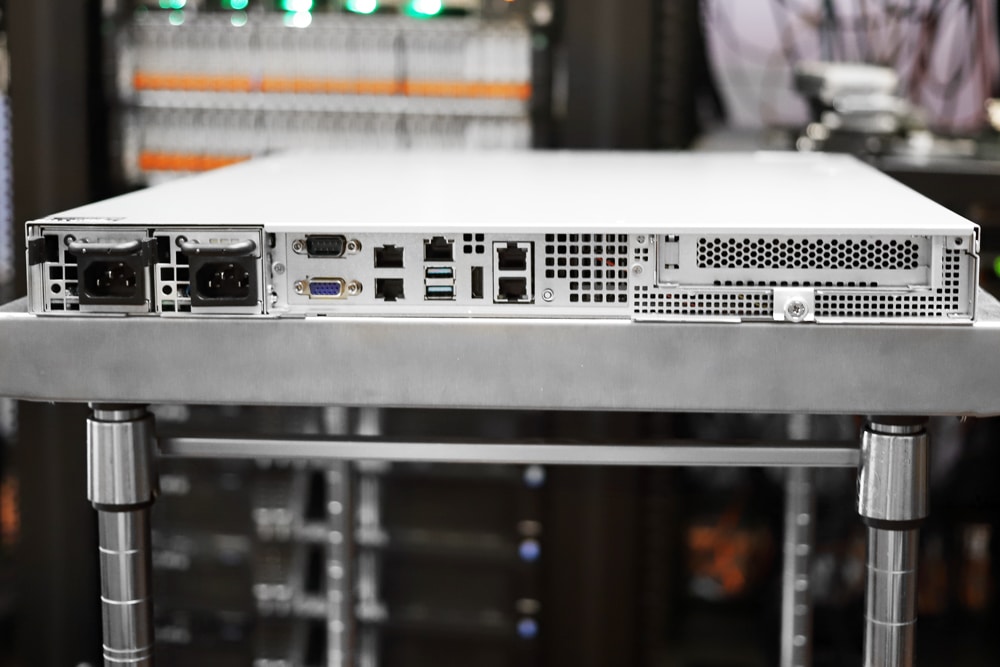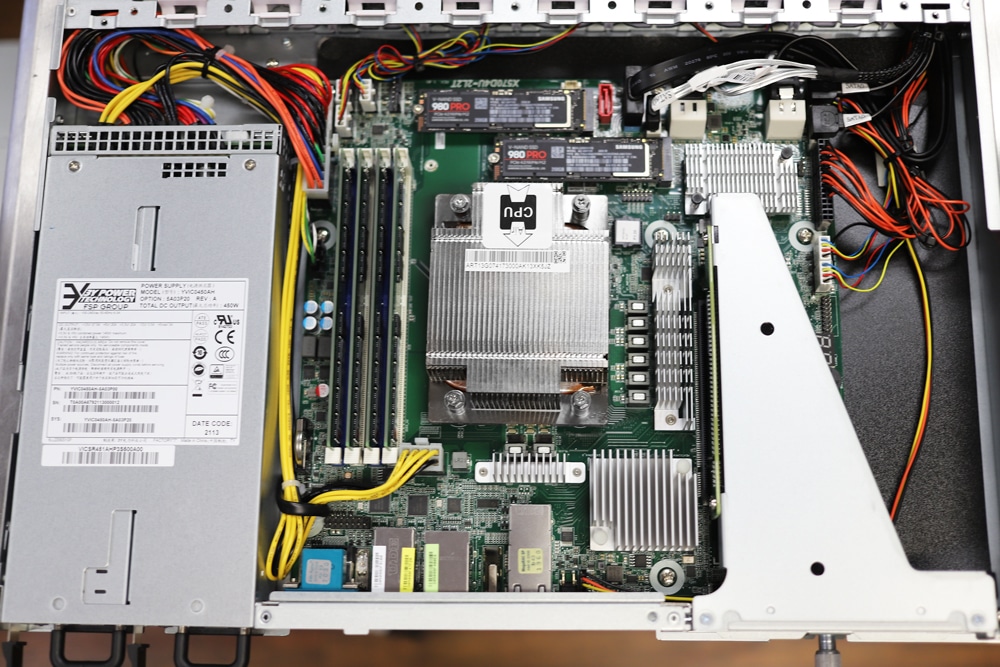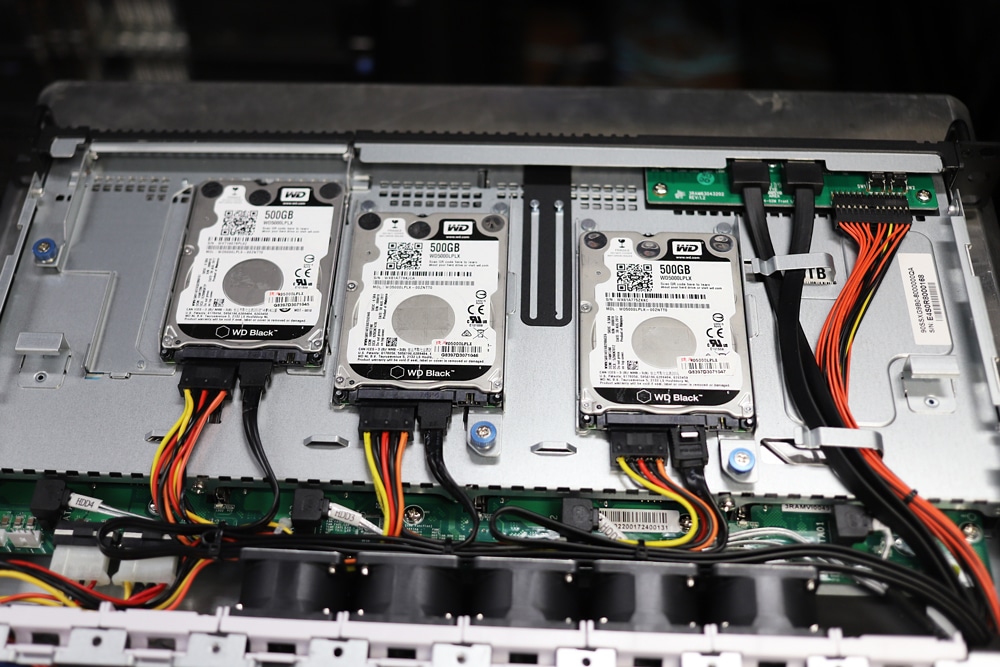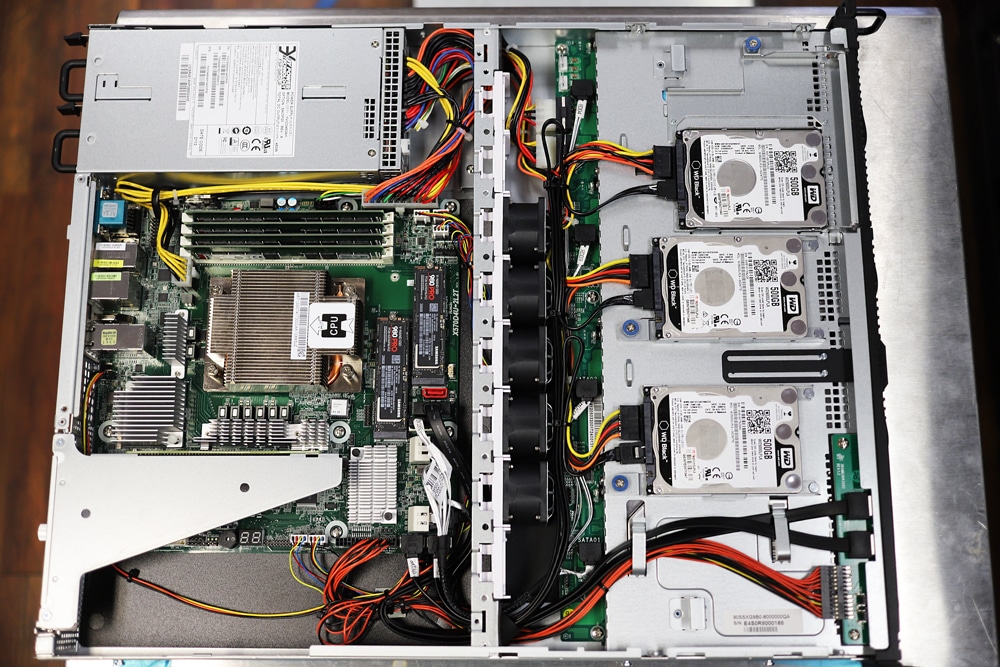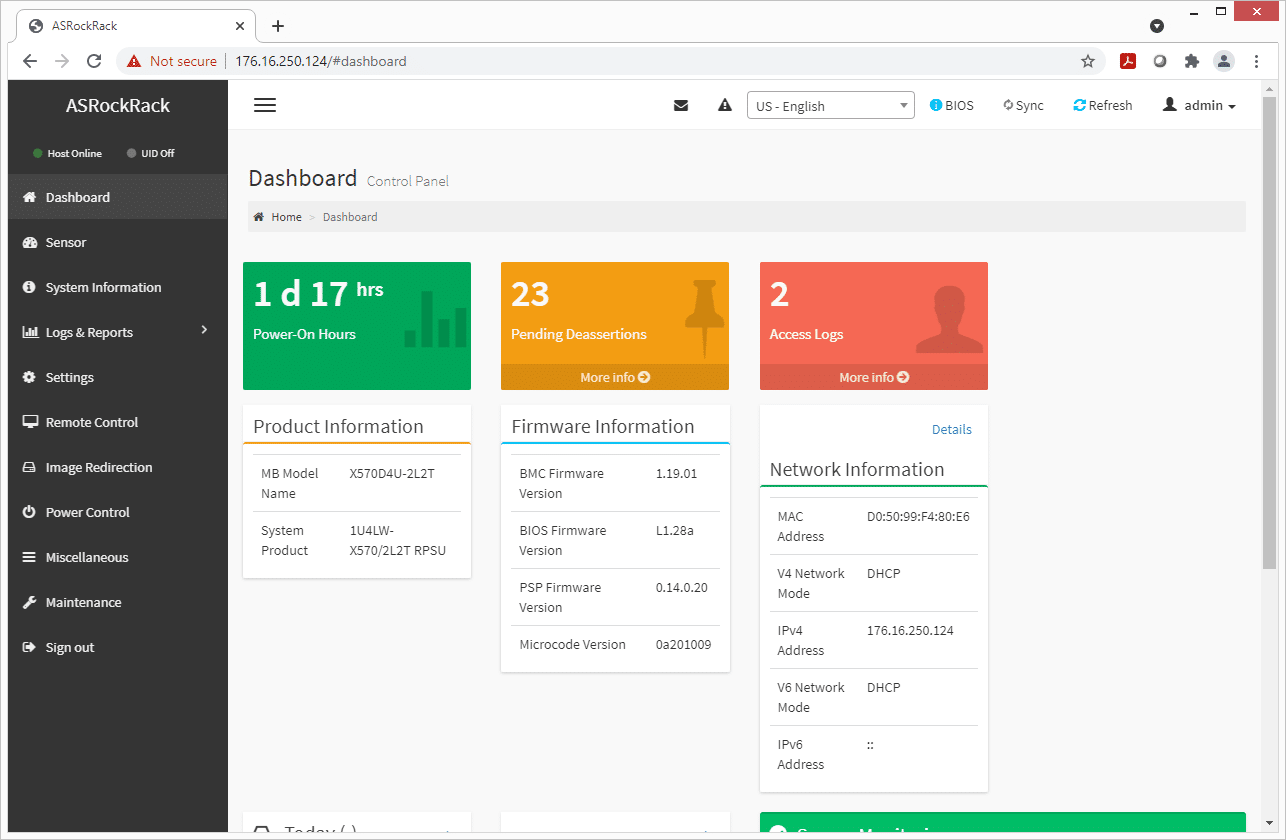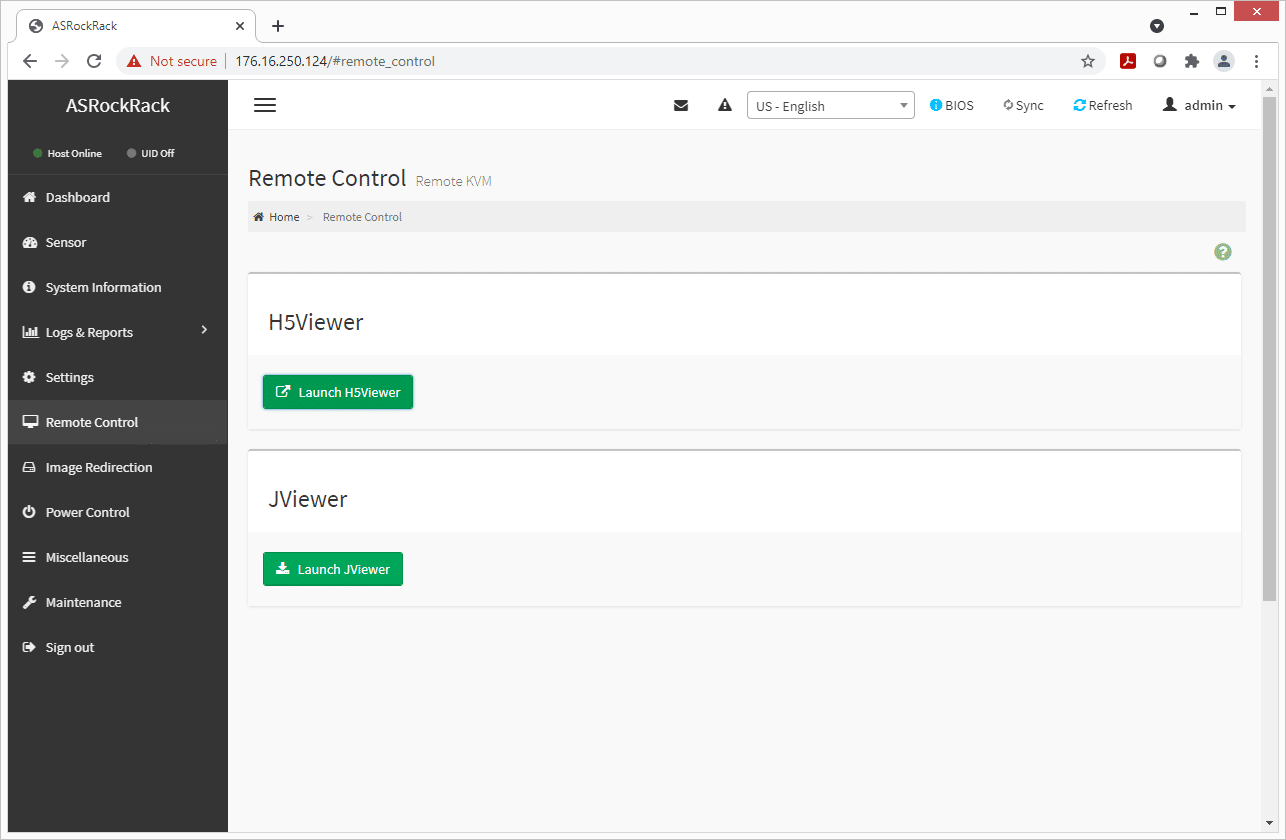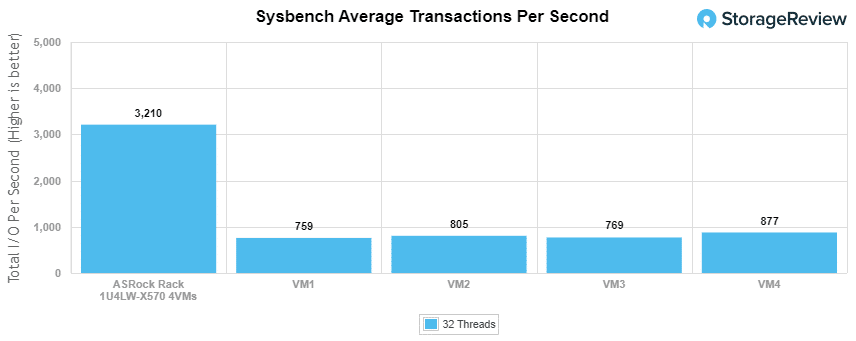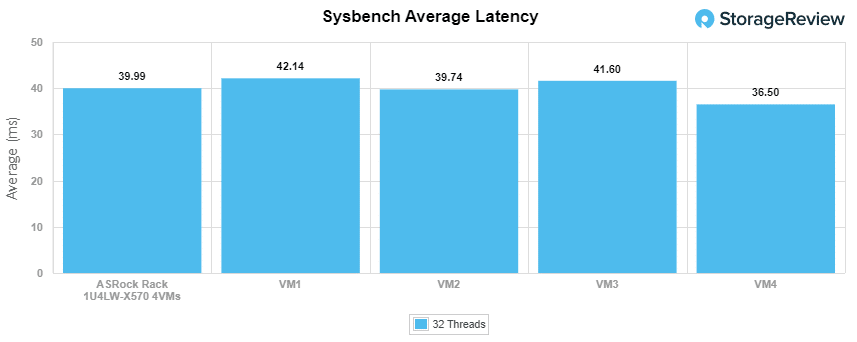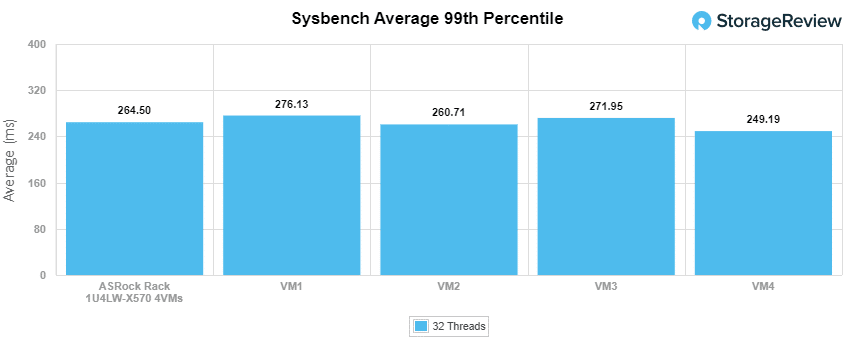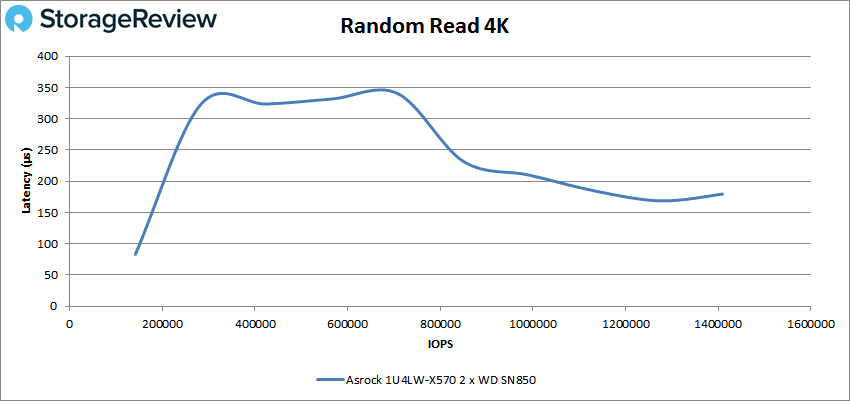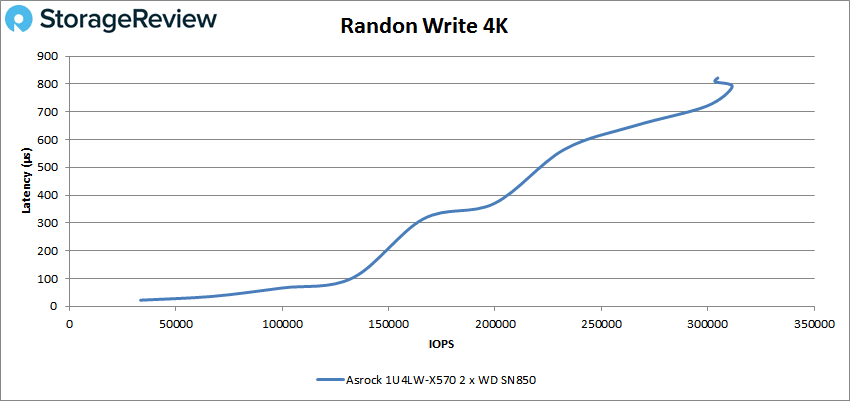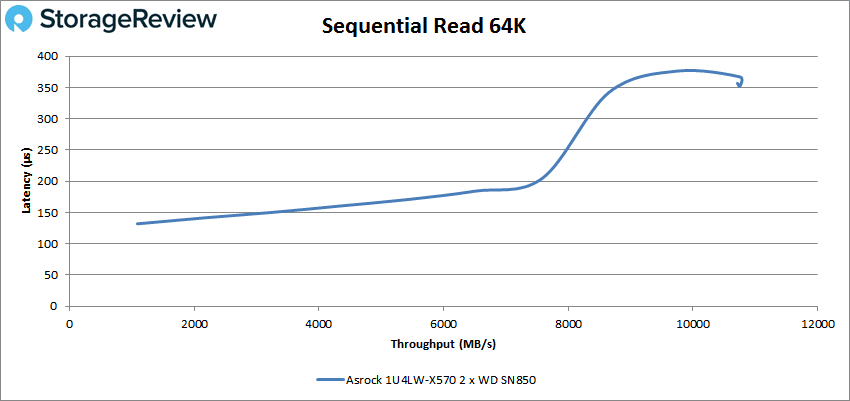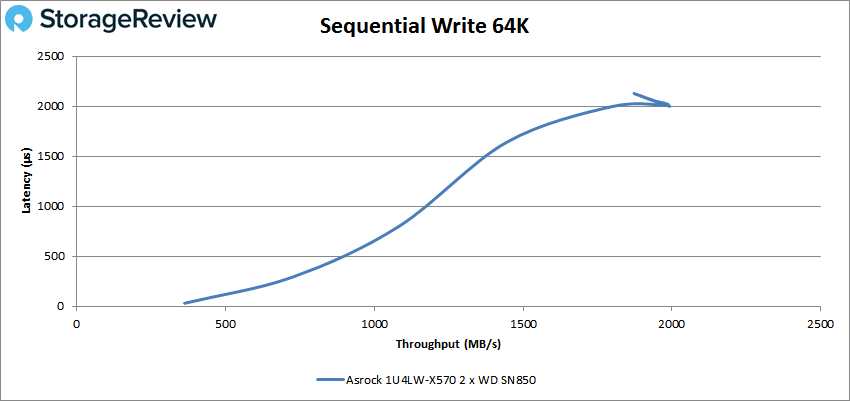The ASRock Rack 1U4LW-X570/2L2T RPSU is a barebones system that delivers AMD Ryzen 5000 Series CPUs in a 1U server form factor. This system is not just a consumer board squished into server form factor though. It offers dual 10GbE on-board, out-of-band management, and a lot of storage flexibility. Importantly the NICs are supported by VMware, meaning this system is ready for virtualization, expanding its use cases. The ASRock Rack 1U4LW-X570 is available through retailers like NewEgg for under $1200.
The ASRock Rack 1U4LW-X570/2L2T RPSU is a barebones system that delivers AMD Ryzen 5000 Series CPUs in a 1U server form factor. This system is not just a consumer board squished into server form factor though. It offers dual 10GbE on-board, out-of-band management, and a lot of storage flexibility. Importantly the NICs are supported by VMware, meaning this system is ready for virtualization, expanding its use cases. The ASRock Rack 1U4LW-X570 is available through retailers like NewEgg for under $1200.
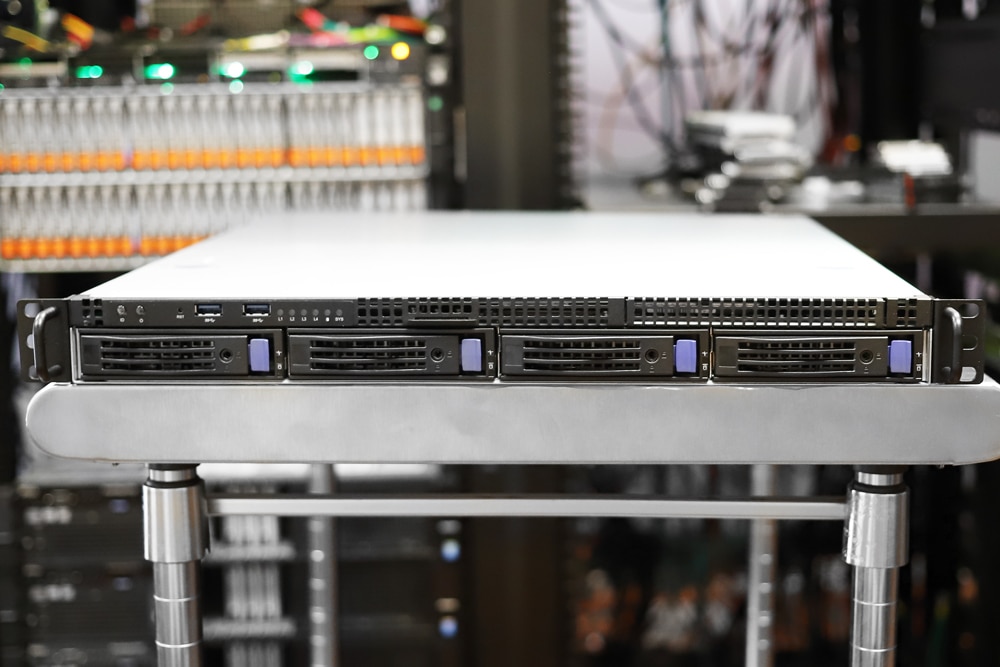
ASRock X570D4U-2L2T Motherboard
The server itself starts with the ASRock Rack motherboard inside. In this case, that’s the X570D4U-2L2T, a micro-ATX board. The 2L2Tstands for two LAN ports and two 10GbE. Aside from the network support the motherboard has four DIMMs that support up to 32GB each or 128GB of DDR4 ECC 3200MHz RAM total (with a 3rd gen AMD Ryzen for the 3200MHz support). Again, with the right processor, the motherboard also supports PCIe Gne4 with two M.2 slots and two expansion ports: PCIe x16 and PCIe x8.
The ASRock Rack 1U4LW-X570 is a cost-effective server that sits in a 1U form factor. The server supports AMD Ryzen 5000 desktop CPUs making it more like a workstation than a server. This lowers the price but limits some of its abilities like putting high-end GPUs in. However, this little guy still comes with some good CPU options, lots of storage configurability, dual 10GbE, up to 128GB of RAM, and a couple of expansion slots.
ASRock Rack 1U4LW-X570 Storage
Along the front are four bays for hot-swapping 3.5” or 2.5” SATA drives. This will go a long way for adding capacity while keeping the price down. Assuming you want to max out capacity on this guy, four bays isn’t enough. The good news is that there are three more internal 2.5” bays. These bays are fixed, not swappable, and they too are SATA. This gives users even more options for adding low-cost capacity ideally with 2.5” SSDs or slim HDDs if you must.
As mentioned, there are two internal M.2 slots that support PCIe Gen4 SSDs. While this is a good way to add some high-speed storage, for boot or other needs, they can also be SATA SSDs as well. They are backward compatible with PCIe Gen3 if you happen to have them on had already or are looking to save a few dollars and top speed isn’t necessary.
ASRock Rack 1U4LW-X570 Specifications
| Form Factor | 1U Rackmount |
| Dimensions | 533.4 x 482.6 x 44.4 mm (21” x 19” x 1.75”) |
| Support MB | X570D4U-2L2T |
| Front Panel | |
| Buttons | Power button w/ LED, UID w/LED, System reset |
| LEDs | LANs, HDD activity, System health |
| I/O Ports | 2 USB 3.2 Gen1 |
| External Drive Bay / Storage | |
| Front Side Drive Bay |
|
| Internal Side |
|
| Power Supply | |
| Type | 1+1 RPSU |
| Output Watts | 450W |
| Efficiency | 80-Plus Platinum |
| AC Input | 100-240V, 50-60Hz |
| System Fan | 5 PWM Easy-swap 40×28 mm fans |
| Processor System | |
| CPU |
|
| Socket | AM4 PGA 1331 |
| Chipset | AMD X570 |
| System Memory | |
| Capacity | 4 DIMM slots (2DPC) |
| Type | 288-pin DDR4 ECC and non-ECC UDIMM |
| DIMM Size Per DIMM | up to 32GB per DIMM |
| DIMM Frequency | up to 3200 MHz |
| Voltage | 1.2V |
| Expansion Slot | |
| PCIe x 16 | Supports 1 FHHL PCIe4.0 x16 via RB1UX16_G4 |
| Management | |
| BMC Controller | ASPEED AST2500 |
| IPMI Dedicated GLAN | 1 x Realtek RTL8211E for dedicated management GLAN |
| Graphics | |
| Controller |
|
| VRAM | DDR4 16MB |
| Rear Panel I/O | |
| VGA Port | 1 D-Sub |
| USB 3.2 Gen2 Port | 2 Type-A |
| Lan Port |
|
| Dedicate LAN | 1 dedicated IPMI |
| Serial Port | 1 |
| UID Button/UID LED | 1 |
| System BIOS | |
| BIOS Type | 32MB AMI UEFI Legal BIOS |
| BIOS Features | Plug and Play (PnP), ACPI 2.0 Compliance Wake Up Events, SMBIOS 2.8.0 Support, ASRock Rack Instant Flash |
| Environment | |
| Temperature |
|
Management
While the ASRock Rack 1U4LW-X570 has a KVM its management is fairly limited. It does, however, give users some level of control. The inventory doesn’t report any of the installed hardware beyond the motherboard and system numbers.
For basic functionality though, it works well for remote connect into the server, power it on, and install an OS remotely. For the use cases of the platform that will be perfectly fine for most buyers in this class. Out of band management isn’t something typically found in workstations, so even in this limited form, it’s nice to have.
ASRock Rack 1U4LW-X570 Performance
To get a feeling for the lighter capabilities of the system, we leveraged Ubuntu Server and VMware ESXi 7 for a mix of synthetic and application workloads. While the system included WD Black 2.5″ and 3.5″ hard drives, we focused on the twin 2TB WD SN850 Gen4 SSDs.
ASRock Rack 1U4LW-X570 Configuration:
- AMD Ryzen 9 5950X 16-core CPU
- 128GB DDR4
- 2 x WD SN850 2TB NVMe Gen4 SSDs
- 4 x 3.5″ 1TB WD Black Hard Drives
- 3 x 2.5″ 500GB WD Black Hard Drives
SQL Server Performance
StorageReview’s Microsoft SQL Server OLTP testing protocol employs the current draft of the Transaction Processing Performance Council’s Benchmark C (TPC-C), an online transaction processing benchmark that simulates the activities found in complex application environments. The TPC-C benchmark comes closer than synthetic performance benchmarks to gauging the performance strengths and bottlenecks of storage infrastructure in database environments.
Each SQL Server VM is configured with two vDisks: 100GB volume for boot and a 500GB volume for the database and log files. From a system resource perspective, we configured each VM with 16 vCPUs, 60GB of DRAM and leveraged the LSI Logic SAS SCSI controller.
SQL Server Testing Configuration (per VM)
- Windows Server 2012 R2
- Storage Footprint: 600GB allocated, 500GB used
- SQL Server 2014
-
- Database Size: 1,500 scale
- Virtual Client Load: 15,000
- RAM Buffer: 48GB
- Test Length: 3 hours
-
- 2.5 hours preconditioning
- 30 minutes sample period
For SQL Server average latency, the ASRock Rack 1U4LW-X570 saw an aggregate of 2ms with both VMs hitting 2ms as well.
Sysbench MySQL Performance
Our first local-storage application benchmark consists of a Percona MySQL OLTP database measured via SysBench. This test measures average TPS (Transactions Per Second), average latency, and average 99th percentile latency as well.
Each Sysbench VM is configured with three vDisks: one for boot (~92GB), one with the pre-built database (~447GB), and the third for the database under test (270GB). From a system resource perspective, we configured each VM with 16 vCPUs, 60GB of DRAM and leveraged the LSI Logic SAS SCSI controller.
Sysbench Testing Configuration (per VM)
- CentOS 6.3 64-bit
- Percona XtraDB 5.5.30-rel30.1
- Database Tables: 100
-
- Database Size: 10,000,000
- Database Threads: 32
- RAM Buffer: 24GB
- Test Length: 3 hours
-
- 2 hours preconditioning 32 threads
- 1 hour 32 threads
With the Sysbench OLTP, we recorded an aggregate score of 3,210 TPS across 4 VMs with the individual VMs ranging from 759.3 TPS to 876.6 TPS.
Sysbench average latency the ASRock had an aggregate latency of 40ms with individual VMs ranging between 36.5ms to 42.1ms.
In our worst-case scenario (99th-percentile) latency test we saw the server hit an aggregate of 264.5ms with individual VMs 249.2ms to 276.1ms.
VDBench Workload Analysis
When it comes to benchmarking storage arrays, application testing is best, and synthetic testing comes in second place. While not a perfect representation of actual workloads, synthetic tests do help to baseline storage devices with a repeatability factor that makes it easy to do apples-to-apples comparisons between competing solutions.
These workloads offer a range of different testing profiles ranging from “four corners” tests, common database transfer size tests, as well as trace, captures from different VDI environments. All of these tests leverage the common vdBench workload generator, with a scripting engine to automate and capture results over a large compute testing cluster. This allows us to repeat the same workloads across a wide range of storage devices, including flash arrays and individual storage devices.
Profiles:
- 4K Random Read: 100% Read, 128 threads, 0-120% iorate
- 4K Random Write: 100% Write, 128 threads, 0-120% iorate
- 64K Sequential Read: 100% Read, 32 threads, 0-120% iorate
- 64K Sequential Write: 100% Write, 16 threads, 0-120% iorate
Looking at random 4K read, the ASRock Rack 1U4LW-X570 started off under 100µs for a brief moment, saw a bit of a latency jump, and then peaked at 1,409,064 IOPS and a latency of 180µs.
4K write saw a much better start in the latency department being as low as 22.2µs, here the sever went on to peak at 311,441 IOPS and a latency of 790µs before a slight drop off.
Switching over to our 64K sequential workloads, in read the ASRock peaked at about 172K IOPS or about 10.7GB/s with a latency of around 350µs.
For 64K write we saw a peak of 31,855 IOPS or 1.99GB/s at a latency of 2ms.
Conclusion
The ASRock Rack 1U4LW-X570 is a 1U workstation in a pizza box form factor that leverages AMD Ryzen 5000 desktop CPUs. This limits the overall performance but brings the cost down to a manageable level. The motherboard supports up to 128GB of RAM, has onboard dual-10GbE connectivity, and offers several interesting storage options. Aside from the four 3.5” hot-swap bays in the front, there are three more 2.5” fixed bays on the inside and two M.2 (PCIe Gen4) slots on the motherboard itself. While it doesn’t support the high-end GPUs, it has plenty of flexibility and storage options for around $1200 for the whitebox.
Looking at performance, we used two SN850 SSDs to get a feel for the peak system capabilities. For our Application Workload Analysis, we did the testing a bit differently using only 2 VMs for SQL Server and then 4 VMs for Sysbench. SQL Server gave us an aggregate average latency of 2ms. For Sysbench we saw aggregate scores of 3,210 TPS, 36.5ms for average latency, and 264.5ms for worst-case scenario latency.
In our VDBench, we ran the ASRock and the same SSDs as above. Here we saw highlights of 1.4 million IOPS, 311K IOPS in 4K write, 10.7GB/s in 64K read, and 1.99GB/s in 64K write. The server was able to stay under 1ms in all of the above with the exception of 64K write where it floated up to 2ms.
Considering that the ASRock Rack 1U4LW-X570 uses a desktop CPU and not a server CPU, the results were still fairly impressive. While it won’t be able to do everything that say, a full-size tower can do, the ASRock Rack is still a very cool little 1U unit that can pump out a handful of good numbers while offering surprising storage density.
ASRock Rack 1U4LW-X570 Product Page
Engage with StorageReview
Newsletter | YouTube | LinkedIn | Instagram | Twitter | Facebook | TikTok | RSS Feed

